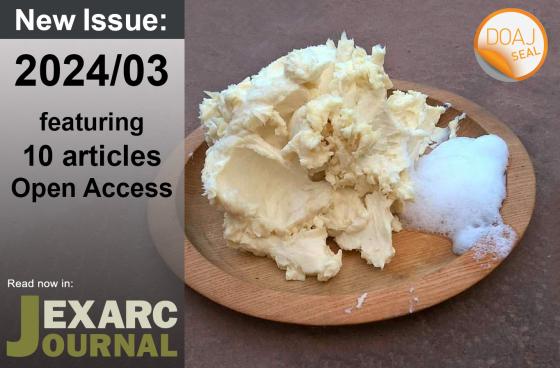
The 2024/3 EXARC Journal brings you five reviewed and five mixed matter articles. All the articles are open access to allow for free exchange of information and further development of our knowledge of the past.
This time two of the reviewed articles come from the UK and one a piece from Greece, Norway and the United States. Each of the articles tackles a different topic. John Whittaker and Mary Jane Berman used microlithic flakes as teeth in a wooden grater to better understand the archaeological evidence of such teeth and also the processing of manioc. Sally Pointer’s project looked into the earliest soapmaking. Georgia Kordatzaki’s study assessed the impact of firing on burnished ceramic surfaces. Andrew Fitches and Ben Elliott’s article studies Mesolithic drilling methods and is based on a series of experiments, in which different techniques were used to drill holes in red deer antler. Antoinette Olsen tested a possibility of weaving eight end satin with five rods on a warp-weighted loom.
In the mixed matters section John Hill introduces the Nesshenge project, there is a review of Experimentelle Archäologie in Europa, Jahrbuch 2023.reports from the EAA Conference in Belfast in September 2023 and from the seminar: The Future of Experimentation – from experiment to new archaeological knowledge in Lejre Land of Legends in March 2024.An article on the RETOLD project from Museumsdorf Düppel talks about standardizing documentation of archaeological house reconstructions.
